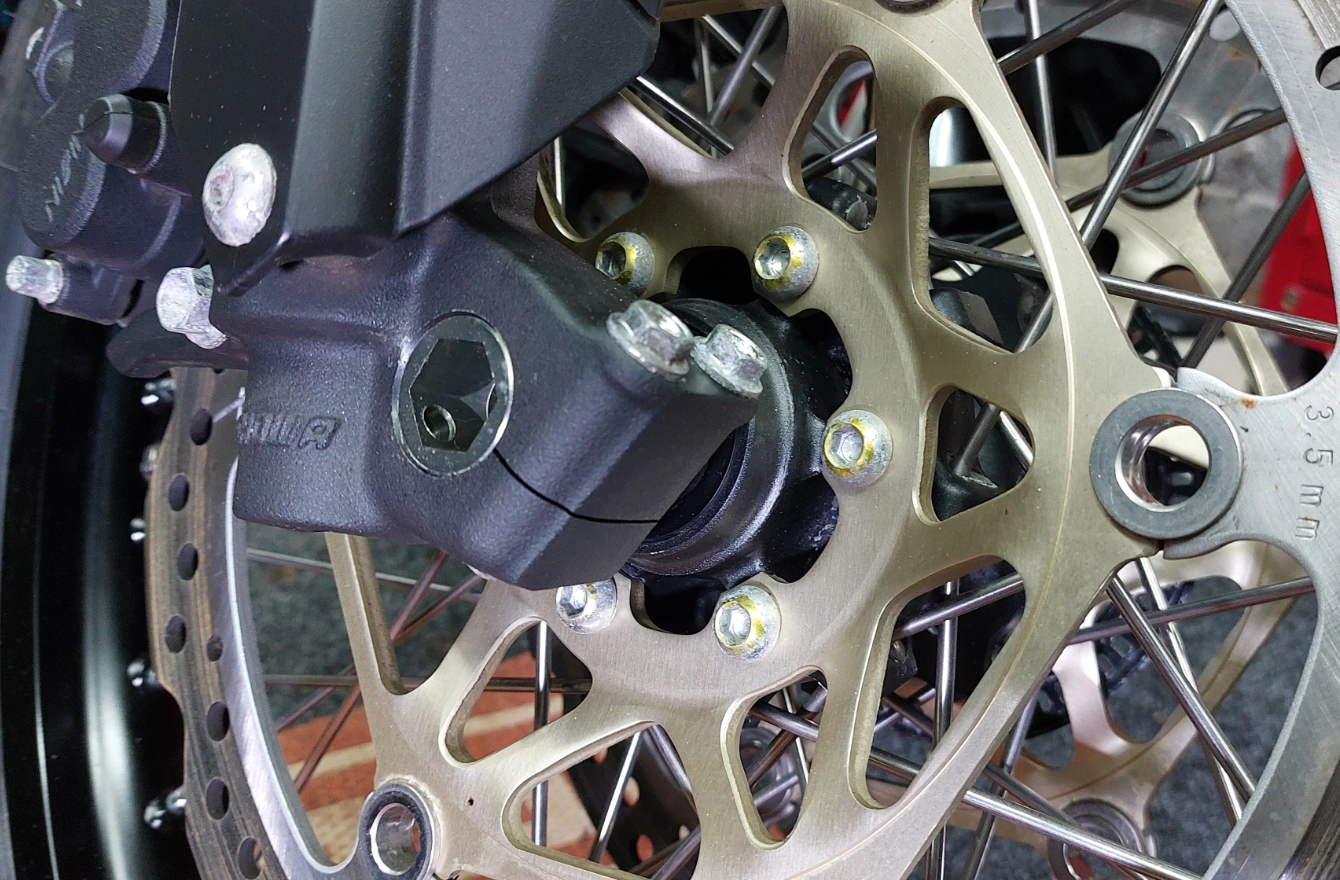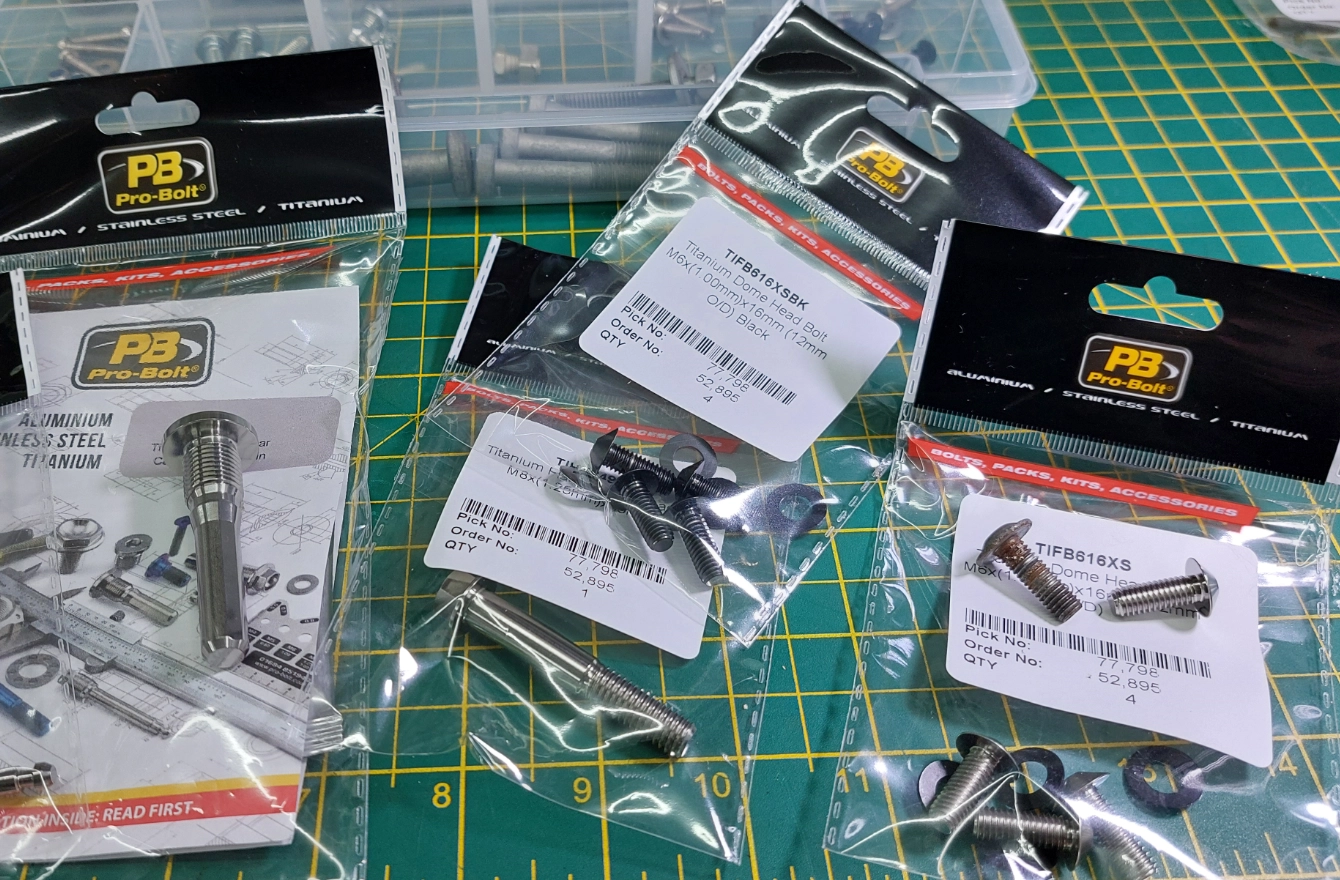Three months and two thousand miles ago, those excellent people at Honda offered to loan us an XL750 Transalp for a winter corrosion test.
I can’t express strongly enough how impressed we were with Honda. Of all the manufacturers we wrote to about discovering how well modern motorcycles stood up to the ravages of winter, Honda took a mere 17 minutes to agree. There were no caveats, rules, or allowable use clauses, just a straight yes.
That is confidence in your product or in the modern vernacular – That takes balls.
Suzuki also agreed but didn’t have a bike available for a long enough period. As for most other manufacturers … at best, they’ll claim they missed the email.
Weather
Whereas Honda didn’t place any restrictions on us, we decided to treat the Transalp with respect. We hosed the Transalp down every week and gave it regular helpings of FS365 through winter.
But that was the limit of our kindness. Perhaps we should have done more, considering we rode the XL750 in some dreadful weather, including the days when the salt spreaders had been out for several nights on the bounce, and then the rain arrived.
These are perhaps the worst conditions for a motorcycle. The bike gets covered in salt water – a weak acid solution – and the heat from the engine, exhaust, and brakes all act as a catalyst, encouraging the corrosion process.
With a coating of FS365 helping, the Transalp distinguished itself against the ravages of winter. The overall fit and finish of the Honda don’t align with the blanket belief that modern motorcycles must be hidden away in winter.
Any Corrosion?
The Good News: The parts that Honda produced in-house didn’t corrode. The engine cases – including the bolts – the cylinders, frame, forks, swinging arm, exhaust, and brake callipers were all perfect.
The Bad News: Corrosion took hold on the Transalp on the footrests, horn mounting bracket, brake banjo fittings, and some of the nuts and bold heads.
Honda probably bought all those parts from third-party suppliers rather than manufacturing them in-house, which appears to have led to price versus quality issues. It is a reasonable assumption that third-party manufacturers will aim to meet the required specifications at the lowest cost.
Honda will have driven a hard deal for large quantities. Meanwhile, the third-party supplier will be looking to maximise their profit margin. Both parties fighting either end of the deal, with the quality of the product stuck in the middle.
The Global Game
Designing a motorcycle will always be a balancing act. Motorcycle manufacturers are looking for the common ground that serves the widest audience, as this makes the greatest economic sense.
They produce one motorcycle for as much of the global market as possible. This simplifies not just manufacturing but also support and spares provisioning. Producing country-specific versions would overload the manufacturing process and result in the inevitable hike in motorcycle prices.

Salt Mountains
In the UK, we salt the roads in winter, which doesn’t happen in Greece. Norway uses much more salt than the UK, but motorcyclists rarely ride in a Norwegian winter.
The USA uses around 17 million tonnes of salt on roads in Winter, but that is for the whole US. In contrast, the UK – a significantly smaller area – uses 2 million tonnes in an average winter.
Building a motorcycle for such a diverse range of conditions and balancing that against global economics is a problem I’m glad I don’t have to solve.
Quality Expectations
With all that said, having parted with a large chunk of change for a new or nearly new motorcycle, we will have an expectation of the quality we expect for the money.
We also have expectations regarding equipment levels. We expect to see a colour TFT of some description on new motorcycles. We question when heated grips are missing from the base specification or when a centre stand is an optional extra.
And then, on top of all that, we expect that a 750cc motorcycle will cost significantly less than an 1100cc when the same levels of development, manufacturing, and distribution go into both capacities.
ProBolt Titanium
In an earlier article, some of Honda’s fasteners showed signs of corrosion, prompting Pro-Bolt to offer us a small selection of their titanium replacements so we could do a side-by-side test.
As you might imagine, the Pro-Bolt titanium fasteners and brake pins still look like new after six weeks on the bike in rough weather.
The quality of Pro-Bolt’s components is absolute – they can even tell me where the titanium was mined and every stage of the process that created the bolt or fastener I fitted to the Honda.

Quality at this level comes at a price, and if this is what I would like, then Pro-Bolt offers a “Bolt Up” service where they will replace every bolt, nut, washer and fastener on my motorcycle.
If motorcycle manufacturers used fasteners of this quality, we would have to expect a circa £2,000 increase in the retail price, which we would most likely baulk at.
What Is The Answer?
The local council’s highway department isn’t going to stop throwing salt on the roads. Winter will keep turning up, and I want to ride as many days of each year as I can.
I’d prefer motorcycle manufacturers increase their build quality so that corrosion isn’t an issue while also meeting my equipment expectations, all without raising the price.
Basically, I’m dreaming.
FS365, ACF50, XCP, and Ceramic coating are wonderful ways to fight the ravages of winter, but as I ride all year, corrosion will happen.
The question that started all of this was, “Do modern motorcycles corrode?” Sadly, the answer has to be, “Yes, they do”.
Is it the manufacturer’s fault? Yes, but in mitigation, the manufacturers are also meeting our equipment level and price expectations.
They are building motorcycles for a global market and at a price point we’ll accept. Whether we then choose to do more to prevent our motorcycles from corroding is an individual choice.
I replace some of the brake parts on my own motorcycles with ProBolt’s titanium versions. I cover the bike in FS365, even in spring, as the salt lies around for months.
A spring rain shower dilutes the salt on the side of the roads, and the process of soaking the bike in acidic water starts again.
After all of that, when – not if – parts start to show early signs of corrosion, I’ll look for specific solutions. I could argue that I shouldn’t have to, but I can’t have it all my own way.
Perhaps it is time to ask Carle (he who can fix most things) to teach me how to powder coat. That, along with the ability to sandblast, would solve any corrosion issues.




















